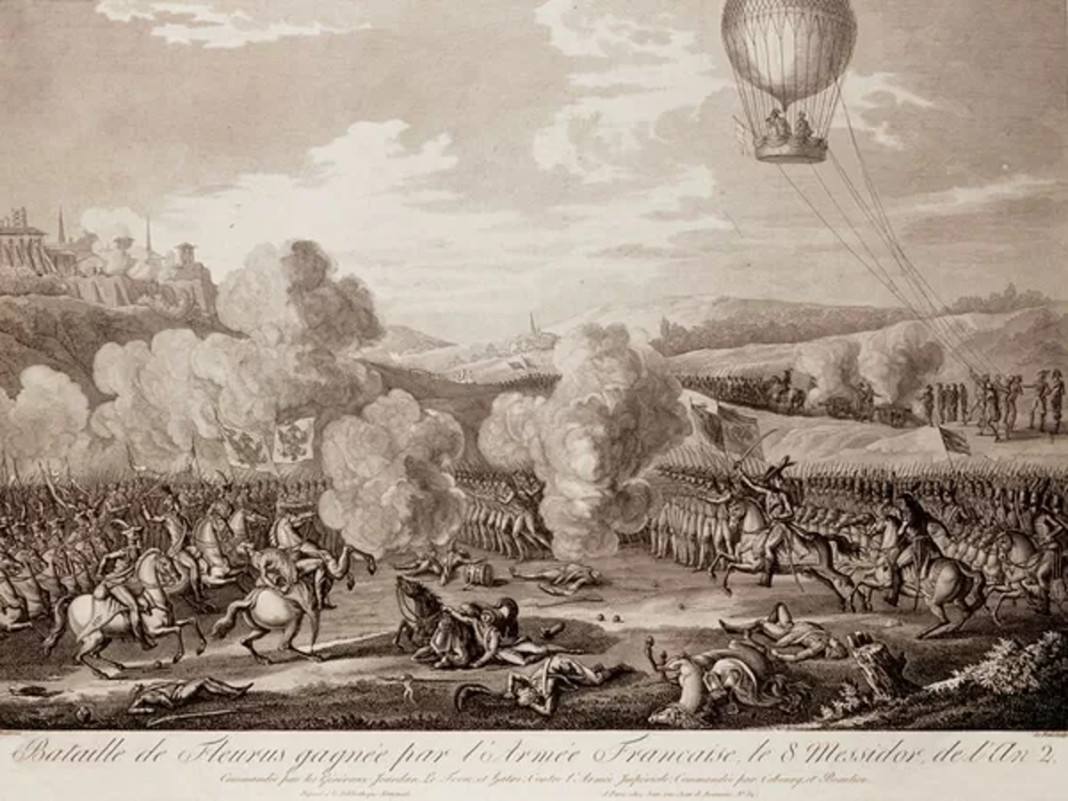[ad_1]
Many probably think the dogfights among biplanes in World War I were the first use of aircraft in combat, but nations used balloon aviation in earlier conflicts.
A few might have read about the Union Army using balloons during the Civil War.
Still, the history of balloon aviation in warfare and other purposes goes back to at least the 1700s and possibly much further than that.
Balloon Aviation Used Extensively in the Civil War
During the Civil War, the Union Army deployed balloons during the Peninsula Campaign in 1862. Union forces were approaching Richmond from the east and raised balloons to observe the placements and movements of Confederate troops and to direct artillery fire. During the western campaign, they also used balloons to support efforts around Chancellorsville and Fredericksburg in the east and along the Mississippi. The Confederates also used balloons around Richmond for similar purposes.

These balloons could carry three people and rise to about 1000 feet, tethered to the ground by ropes. The balloon operators would use signal flags or lower messages on the ropes to communicate with ground troops. They filled the balloons with hydrogen gas, which they produced by mixing sulfuric acid with iron filings.
France Develops Hydrogen and Hot Air War Balloons
France was developing war balloons long before the Civil War. Brothers Jacques and Joseph Montgolfier conducted early experiments and launched their first hot air balloon, covered with paper and cloth, on 19 September 1783. They used a burning combination of straw, chopped wool, and dried horse manure underneath the balloon to heat the air and inflate it. They found this helpful as it kept the flame low, reducing the risk of setting the balloon on fire, although it did create a lot of smoke.
A Sheep, a Duck, and a Rooster Were the First Balloon Pilots
According to the story, the brothers were afraid to go up on that first flight, so they sent a sheep, a duck, and a rooster to see how it would affect them. The balloon safely landed after eight minutes, and its passengers were unharmed.

Another Frenchman, Jacques Alexander Cesar Charles, also worked on balloon aviation development. He came up with the idea of using ballast, valves for the gas, and a net to enclose balloons. He worked with two other men, Antoine Lavoisier, and Guyton Morveau, to create portable hydrogen generators for troops to use in the field. This became a problem when sulfur became scarce because France also needed it to produce gunpowder. Lavoisier then developed a system to generate hydrogen by passing steam over red-hot iron.

World’s First Air Force Flew Balloons – Not Planes
Following these developments, in 1794 France’s Committee of Public Safety established a balloon unit, the “Compagnie d’Aerostiers.” It was the world’s first air force. The unit had about 30 men and their own uniforms. Andre Giroud was on that first flight and realized the potential of balloons for military purposes, stating they could be “valuable for observing the movements of armies.”

Several months later, France used balloons for observation purposes in the French Revolutionary and Napoleonic Wars during sieges at Maubeuge and Charleroi and a major battle at Fleurus. Napoleon later used balloons during action in Egypt. Many paintings from the period, especially of Fleurus, show balloons over the battlefield.

Balloon Reports from Russia, Portugal, Mexico, and China
There are also earlier mentions of other nations using balloons for military purposes. In a story from Russia in 1731, a military officer named Kria Kutnoi launched a balloon from Ryazan, a small town about 120 miles south of Moscow. The balloon supposedly crashed into a church tower, upsetting local residents who complained the balloon was made of hides and “filled with evil-smelling smoke.”
Looking further back in time, there are stories of people possibly using balloons in Portugal in 1709 and Mexico in 1667. According to the newspaper ‘La Gaceta de Mexico‘, a man named Veracrus broke his leg after rising in a strange device with fire. Other report exist of China using unmanned balloons as military signaling devices in the third century. But even this may not be the first use of balloons.
Possibility of Ancient Balloons
Several researchers have suggested that the Nazca Indians of Peru could have used hot air balloons to create the Nazca Line Drawings from 700 B.C. to 200 A.D. There is no general agreement on this, but the story does seem plausible, as there are no mountain peaks overlooking the area from which they could have made the drawings

Mysterious Nazca Lines in Peru. Could people have used balloons to make them? | Image: Alexander Schimmeck
[ad_2]
Source link


